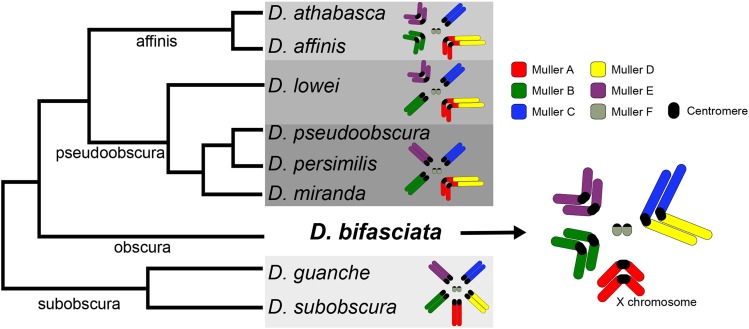Figure 1.
Evolutionary relationships and karyotype transitions of obscura group flies. The ancestral karyotype of the obscura group (shown here as Drosophila subobscura) consists of five large and one small pair of telocentric chromosomes, referred to as Muller elements A-F (reviewed in Schaeffer 2018), and shown color coded. Significant karyotypic changes have occurred across the obscura group (highlighted with gray boxes) with chromosomal fusions and centromere movement altering chromosome structure (Bracewell et al. 2019). Drosophila bifasciata represents an important karyotype to understand evolutionary transitions since Muller A (the X chromosome), B and E are thought to be metacentric and Muller A is unfused (Moriwaki and Kitagawa 1955). In D. bifasciata, it is thought that Muller C and D fused, although C-D fusions are only present in some obscura subgroup species (Buzzati-Traverso and Scossiroli 1955). Shown phylogenetic relationships adapted from (Gao et al. 2007) with subgroup designations shown along the branches.

